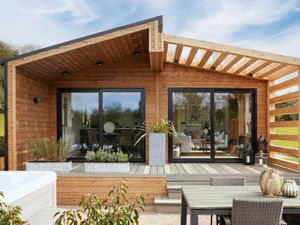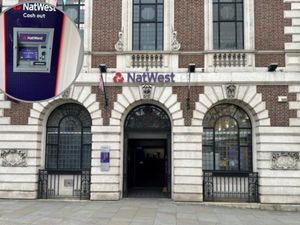In detail: The rival plans to build thousands of homes around Bridgnorth
Two plans to build more homes in Bridgnorth are pitted against each other.

The Taylor Wimpey scheme at Tasley is to build 1,050 homes and a business site of at least 16 hectares on land south of the A458 and west of the B4364 Ludlow Road, against the Stanmore Consortium's garden village proposal to build 850 homes and a 28-hectare business site on green belt land in Stanmore up until 2036, and 650 more homes post 2036.
See also:
Here, we take a closer look at the proposals.
Plan one: Stanmore Gardens, a project to create a new community of up to 1,500 homes across 70 acres of land
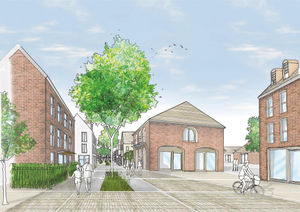
Stanmore Garden Village is the first of two developments that have been put forward as part of plans to expand Bridgnorth.
Proposed as part of Shropshire’s Local Plan Review in 2018, the development would consist of 850 homes and a 28-hectare business site on green belt land in Stanmore up until 2036, with land earmarked for 650 more homes post 2036.
The development is being put forward by the Stanmore Consortium, made up of Apley Estates, Stanmore Properties and other local landowners.
Lord Hamilton of Apley Estate said: “The Apley Estate has been in my family’s ownership for over 165 years. Stanmore Business Park has been owned and operated by the Hickman family for more than half a century.

“We both have a proven record of investment in Bridgnorth. We are proud of the town and want to ensure its future success. Our decisions are made on the basis that we will still be here in future to answer to the people of the town for what we do. We want us all to feel proud of what we deliver.
“We will not develop a generic housing estate that has no individuality and could be anywhere in the UK. We want Stanmore to reflect Bridgnorth’s heritage and special qualities. We have no allegiance to a housebuilder and are free to engage local and specialist firms to deliver housing.
“Our proposals reflect the principles of the Building Better, Building Beautiful Commission. The architecture will have character, complementing local styles. We will maintain high standards of quality and appearance by producing a definitive design guide. Every building at each phase will meet its high quality design standards.

“This will ensure that we deliver imaginatively designed homes with gardens, good access, the facilities people want and plenty of open spaces to encourage healthy communities. We will commit to managing these open spaces on behalf of the town. We will create a community with a mixed tenure of homes and housing types that are genuinely affordable. Apley provides 120 affordable homes on the estate today. We aim to retain ownership of some affordable properties and do the same at Stanmore.”
Lord Hamilton added that cutting carbon and building sustainably would be a focal point of development. He said: “Climate change is affecting every human being on the planet in the way we live. We are already investing in sustainable methods and practices across the Estate and will support Shropshire Council in achieving its net zero carbon goals.
“There are 1,700 jobs already at Stanmore Business Park and many hundreds planned. By placing the housing nearby, we will reduce the need for car travel to work, saving millions of miles in journeys in and out of Bridgnorth. Jobs at Stanmore are already a reality. We will provide land for new investment in jobs and skills.
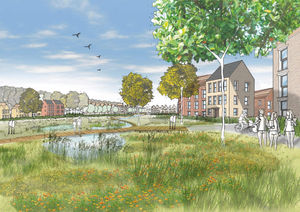
“Stanmore Village will be designed and built with sustainability at its heart. We aim to exceed the leading standards at the time for sustainability, minimising the energy costs of running our homes. Our professional team has a strong track record advising on the best way to minimise carbon footprints.
“Stanmore will have large areas of open space from the start. We will expand the variety of natural habitats for wildlife and are committed to working with local people to improve biodiversity and visitor facilities at Stanmore Country Park.
“Finally, and crucially, the partners in Stanmore already own the land on which it will be built. We are not committed to paying high prices.
Stanmore is the best option for Bridgnorth for sustainability and for better, more beautiful buildings.”
Project two: Tasley Garden Village, with 1,050 homes, new school, community centre and country park to west of town
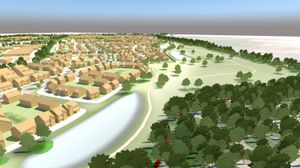
Proposals put forward for a garden village to the west of Bridgnorth in Tasley surfaced in May this year.
Put forward by house builder Taylor Wimpey, the development would comprise 1,050 homes and at least 40 acres of employment land to be built up until 2038 on land south of the A458 and west of the B4364 Ludlow Road.
The housing company also wants to build an additional primary school, a community centre and create a country park, as well as earmark land for further development post 2038 as part of its Tasley Garden Village proposal.
The site is located adjacent to Bridgnorth town centre and the planned Shropshire Site Allocations and Management of Development plan (SAMDev) allocations.
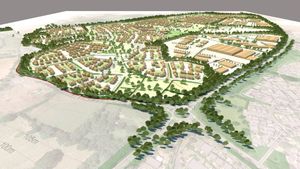
A replacement park and ride has been suggested in efforts to make it easy for residents and employees to access the existing facilities within the town and give existing residents access to new facilities.
Taylor Wimpey has carried out a range of technical studies and assessments in transport, ecology, flood risk & drainage, heritage, ground conditions and landscape, to demonstrate the suitability of the garden village.
The proposed development is located outside of the designated green belt and would remove the need for large scale green belt release required to deliver any development at Stanmore.
Zoe Curnow, strategic land and planning manager for Taylor Wimpey, said: “As a considerate, responsible developer, we are committed to not only providing high quality homes, but also to ensuring that we give something back to the local communities in which we build and deliver both private and affordable homes.

“Tasley Garden Village presents the opportunity to deliver a landscape-led garden village providing a mix of homes for local people, access to new employment opportunities alongside new community uses and a country park.
“It is incredibly important to us to support the local community and give people the chance to have their say.
“The feedback we have received from local residents has been invaluable in helping us to develop and refine our emerging proposals through the Shropshire Local Plan Review process.”
Taylor Wimpey undertook a period of public consultation between May 6 and June 3 this year so as to better understand the thoughts and views of local residents, businesses, community groups and other interested parties on its proposals for Tasley Garden Village.
The consultation was carried out electronically, with an information webinar taking place on May 27.
The scheme was submitted after the Stanmore one and appears yet to have secured major backing within the town.
At last week’s extraordinary meeting of Bridgnorth Town Council, there was little support for the Tasley scheme in its current form among town councillors.
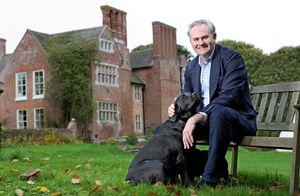
A number of people have raised their concerns in relation to the project, including prominent journalist and author William Cash.
The Tasley scheme aims to fit the government’s aim of providing a series of garden villages, which are envisaged as thriving communities with jobs, shops and recreational facilities.
Supported by RAC Foundation, Transport for New Homes, a group promoting alternatives to the car, said they believe the 20 garden communities they assessed – still in various stages of the planning process – could create up to 200,000 households dependent on driving. But their new report suggests the developments could remain as edge of town estates, reliant on cars.


